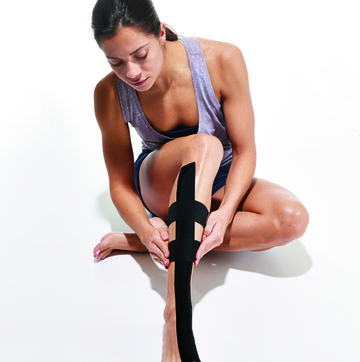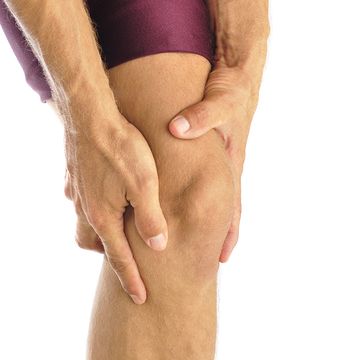Your calves and shins may not have the complex construction or delicate reputation of your knees and feet. But that doesn't mean they're indestructible. In a recent survey of 14,000 injured runners, sports podiatrist Stephen M. Pribut found that calf pulls were the second most common complaint, with shinsplints coming in fourth. These injuries outranked Achilles tendinitis, heel pain, even lower-back pain. Why are they so common? Anyone who runs on hard surfaces, trains in worn-out shoes, rapidly jacks up mileage, or neglects stretching and strengthening the lower leg is at risk, says Pribut, who treats runners in Washington, D.C.
To keep your lower legs healthy, it helps to understand how they work. Your calves lift the heel about 1,500 times per mile, and your shins support the arch, raise the toes, and absorb impact. Because the propulsive motion of running works the rear of the leg more so than the front, muscle imbalances are common among runners. You've probably heard this about your hamstrings and quadriceps, and the same is true with your calves and shins. As a result, runners typically have overworked, tight calf muscles and weak shin muscles. This can lead to four specific lower-leg injuries--calf pulls, shinsplints, stress fractures, and compartment syndrome.
A calf pull (also called a strain or tear) occurs when one of the calf muscles (gastrocnemius or soleus) is stretched beyond its limits and separates from the Achilles tendon. When it occurs, you may hear or feel a pop in your calf muscle. Not warming up enough, doing too much hill work, stretching excessively, and suddenly increasing your mileage can lead to calf strains. Recovery depends on the severity: minor microtears may heal in two weeks. A complete tearing could take up to four months.
Pain down the front of your lower leg is likely due to shinsplints--or medial tibial stress syndrome, as medical practitioners prefer to call it. It's thought of as a beginner's injury, but shinsplints can strike anyone, especially those who overtrain. They're caused by degeneration of the muscles or tissues that attach to the tibia (shinbone). Anterior shinsplints affect the tibialis anterior muscle (outer side of the tibia), which keeps your toes from dragging when you take a step and lowers the forefoot to the ground. Posterior shinsplints indicate irritation of the posterior tibialis muscle (inner side of the tibia), which decelerates the pronation of the foot after heel-strike. Too many miles with too little rest, improper biomechanics, or tightness and weakness in the calf muscles are all contributing factors, says Janet Hamilton, a registered clinical exercise physiologist and author of Running Strong and Injury Free. Typically, this pain strikes when you start to run and stops once you've warmed up. If you have shinsplints, the best remedies are rest, icing, stretching and strengthening exercises, and anti-inflammatories.
If the pain is persistent, however, it could be a stress fracture. "The tibia takes about 70 percent of your body weight during running, which means it's under a lot of pressure," says Brian Krabak, M.D., a sports-medicine and rehabilitation specialist at Johns Hopkins University. Stress fractures--or small cracks on the surface of bones--rarely occur from one sudden trauma, but more commonly from the accumulation of damage. The definitive test for a stress fracture is a bone scan or an MRI, but a touch test often gives it away. "You can usually find one spot on the tibia that makes you jump off the table," says Pierre Rouzier, M.D., team physician for the University of Massachusetts and author of Sports Medicine Patient Adviser. Of the shin injuries, stress fractures demand the strictest rehab: usually six to eight weeks of rest. Some research has shown that using anti-inflammatories can interfere with bone mineralization and prolong recovery, making it important to diagnose a stress fracture early--anti-inflammatories are a typical treatment of other lower-leg injuries.
Exercise-induced compartment syndrome can also cause lower-leg pain. The repetitive nature of running can lead to swelling within the lower leg's compartments, which house its muscles, tendons, and nerves. "When you run for a long period of time, a compartment can get too much blood, causing it to swell, and essentially choke off blood vessels to the nerves in the foot," says Dr. Rouzier. Damaging those nerves can make your feet feel numb and clumsy, like you're shuffling, not running. Symptoms generally disappear within an hour after you stop running but recur when exercise resumes. Rest usually alleviates the problem. In severe cases, surgery may be necessary.
Luckily, Dr. Krabak says, most issues can be dealt with by looking at your training and your biomechanics to determine how to approach the problem. After all, while a bag of frozen peas might help ease the pain, you won't prevent re-injury unless you find and fix the underlying cause.







